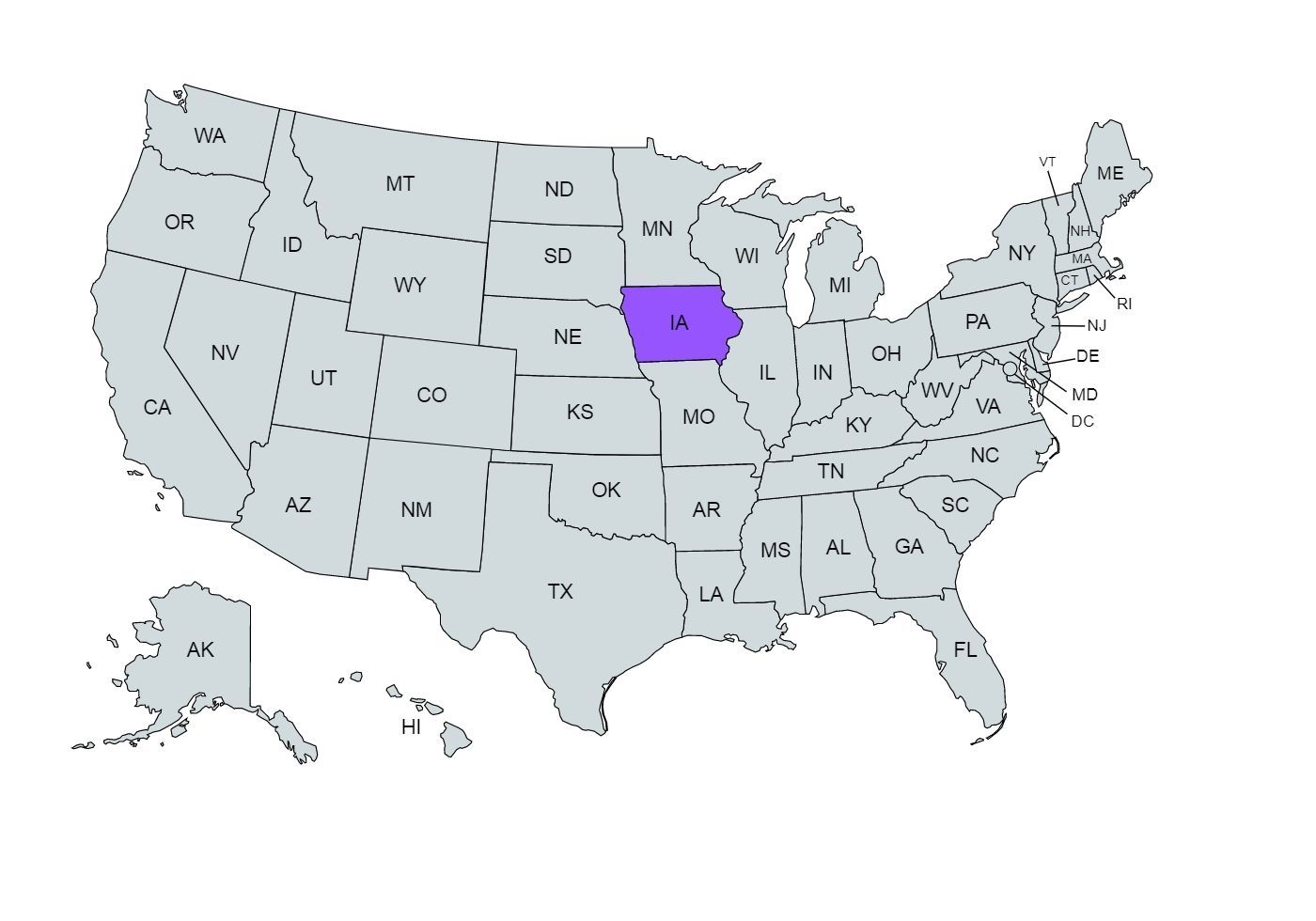Iowa Paycheck Calculator: Calculate Your Net Pay
If you’re wondering, “How do I figure out how much money I take home in Iowa?” we’ve got you covered.
Use our simple pay calculator to estimate your net or “take home” pay after taxes, as an hourly or salaried employee in Iowa.
Paycheck Calculator
Meanwhile, get ahead with our free resources:
How Does the Paycheck Calculator Work?
Input your salary information, such as wage and pay frequency, and our tool will handle the tax calculations for you. Once you’ve filled in all the information, click the “Calculate Tax” button, and the calculator will provide an estimate of your net or “take home” pay for the specified pay period. You can also check out our gross pay to hourly calculator and hourly to salary earning calculator.
Overview of Iowa Taxes
While primarily known for farming, Iowa's economy thrives on diverse sectors including manufacturing, biotechnology, finance, and government services.

With its economic resilience seen during the late 2000s recession and a credit rating of AAA (the highest rating given by credit rating agencies), Iowa's per capita income in 2006 was $23,340, and its current unemployment rate stands at 4.0% as of September 2021.
If you decide to start a new job in this economically robust region, you will begin by completing a W-4 form.
This form will guide your employer on how much to withhold for taxes from each paycheck. Federal income taxes are withheld and directed to the IRS for your annual income tax.
Your marital and filing status, whether single, married, filing jointly or separately, and dependents influence your withholding.
Besides federal income tax, Medicare (1.45%) and Social Security (6.2%) taxes are withheld, forming FICA taxes. Earning over $200,000 incurs a 0.9% Medicare surtax.
If self-employed, you pay full rates of 2.9% for Medicare and 6.2% for Social Security, with deductions available.
Pay frequency affects paycheck size; monthly pay is larger than bi-weekly. Iowa, with its varying income tax rates from 0.33% to 8.53%, employs nine brackets determined by income.
Iowa's tax environment for workers comes with a progressive income tax system with varying rates and deductions, making its favorability dependent on individual financial circumstances.
Median Household Income in Iowa
Salary in each state is typically based on the cost of living. While salaries vary widely based on position, the median household income in your state can give you a glimpse at the average salary a household is earning in your region.
The median household income saw a substantial increase from $49,427 in 2011 to $65,600 in 2021. This upward shift of around $16,000 across the decade indicates positive economic changes within the state.
From 2011 to 2015, the median household income rose steadily, suggesting a gradual recovery from the aftermath of the 2008 financial crisis.
The subsequent years, 2016 to 2021, witnessed more robust growth, indicating a potentially stronger and sustained economic rebound.
However, while the increasing median household income is a positive sign, it's essential to consider factors such as inflation and cost of living.
In some cases, even if income is rising, it might not necessarily translate to significant improvements in the standard of living if the cost of essential goods and services rises proportionally.
Tips for Maximizing Your Paycheck
Here are some tips to help you maximize your paycheck:
- Become familiar with your payroll deductions
- Understand techniques for reducing your tax
- Fully utilize your work-related perks
- Develop a financial plan and define financial goal
- Look into additional income through extra hours or performance incentives
- Regularly check your pay stubs for inaccuracies
